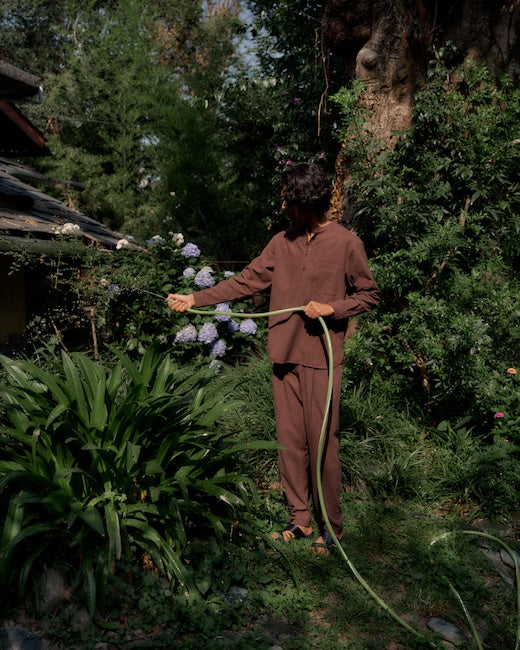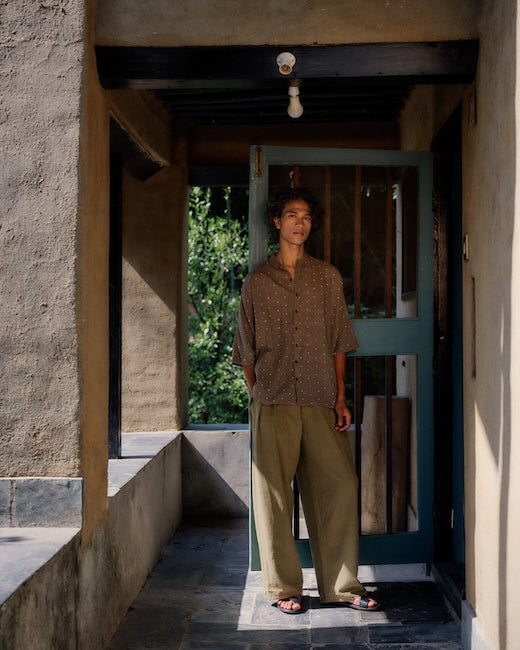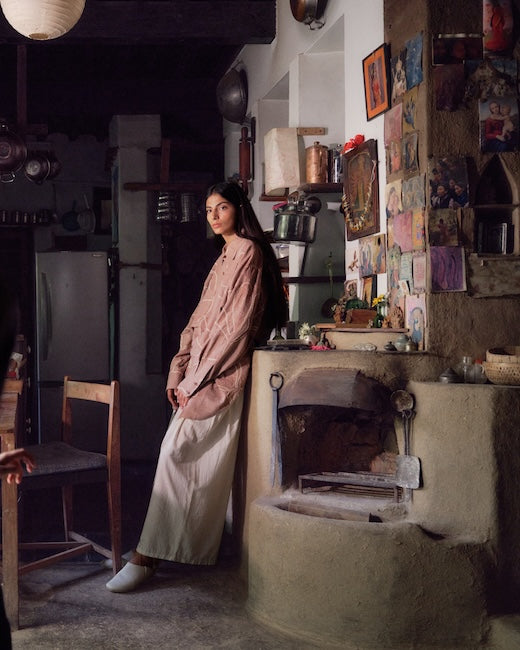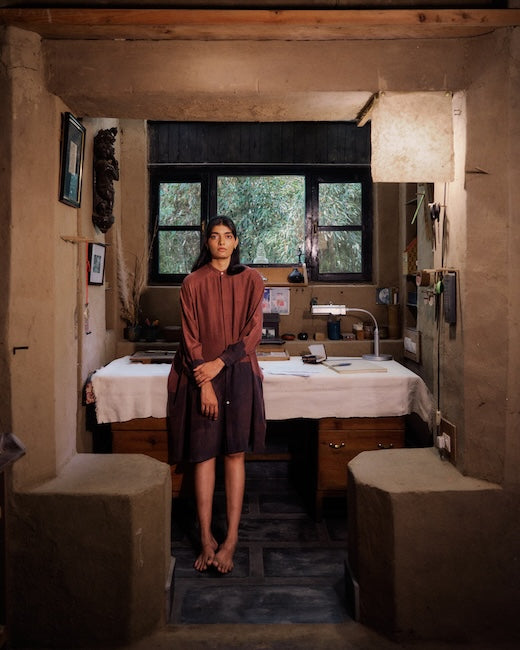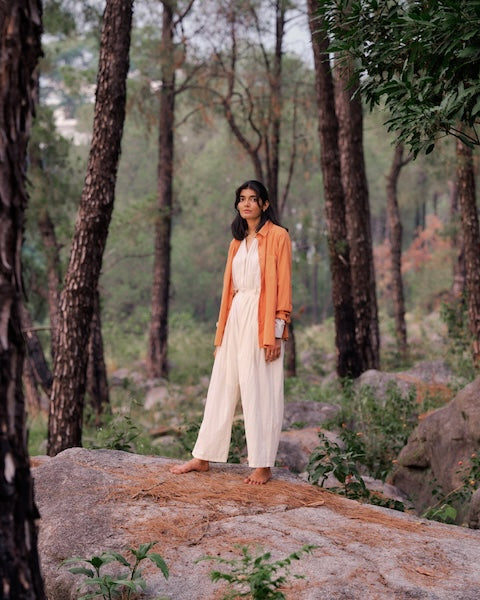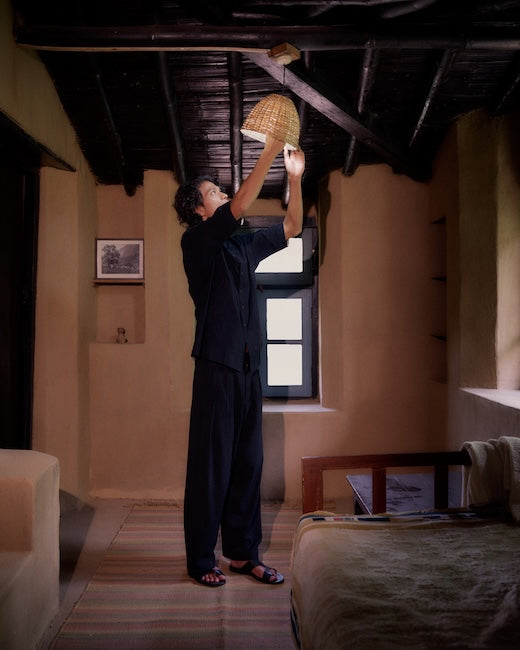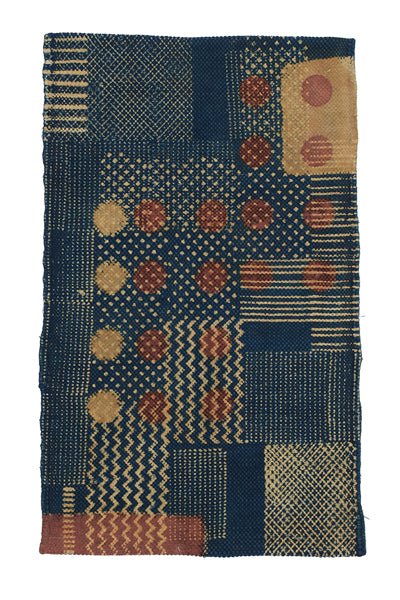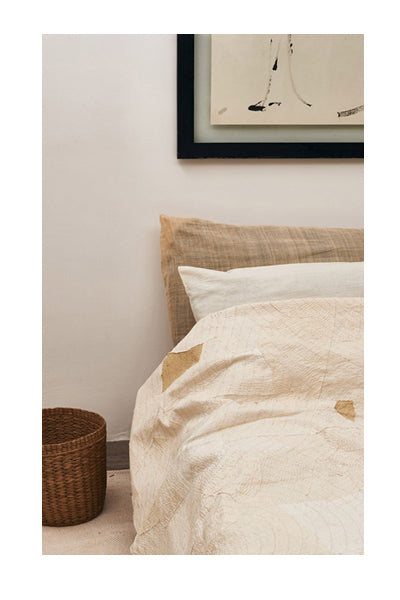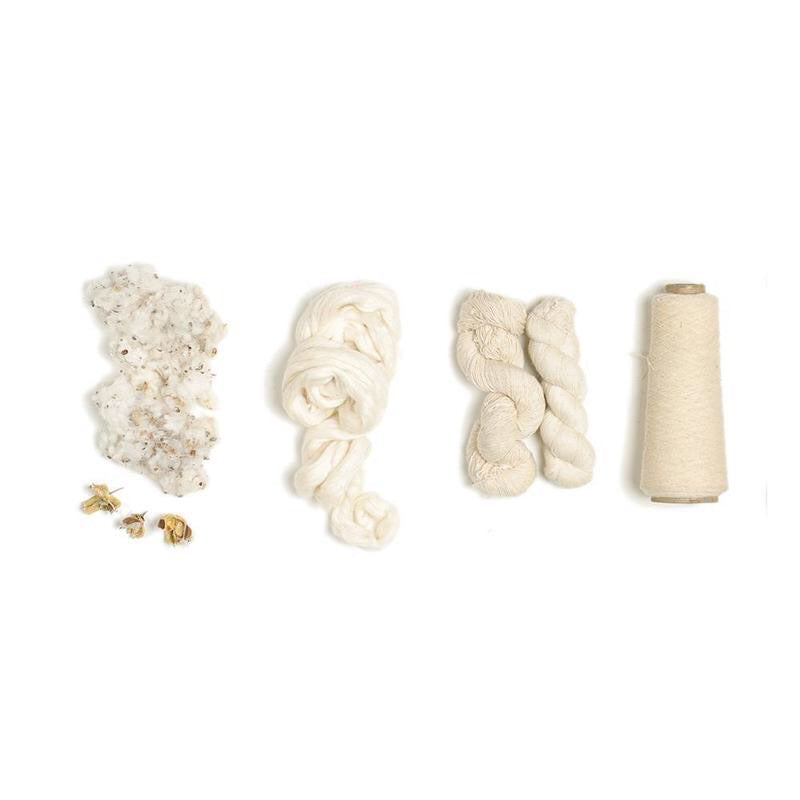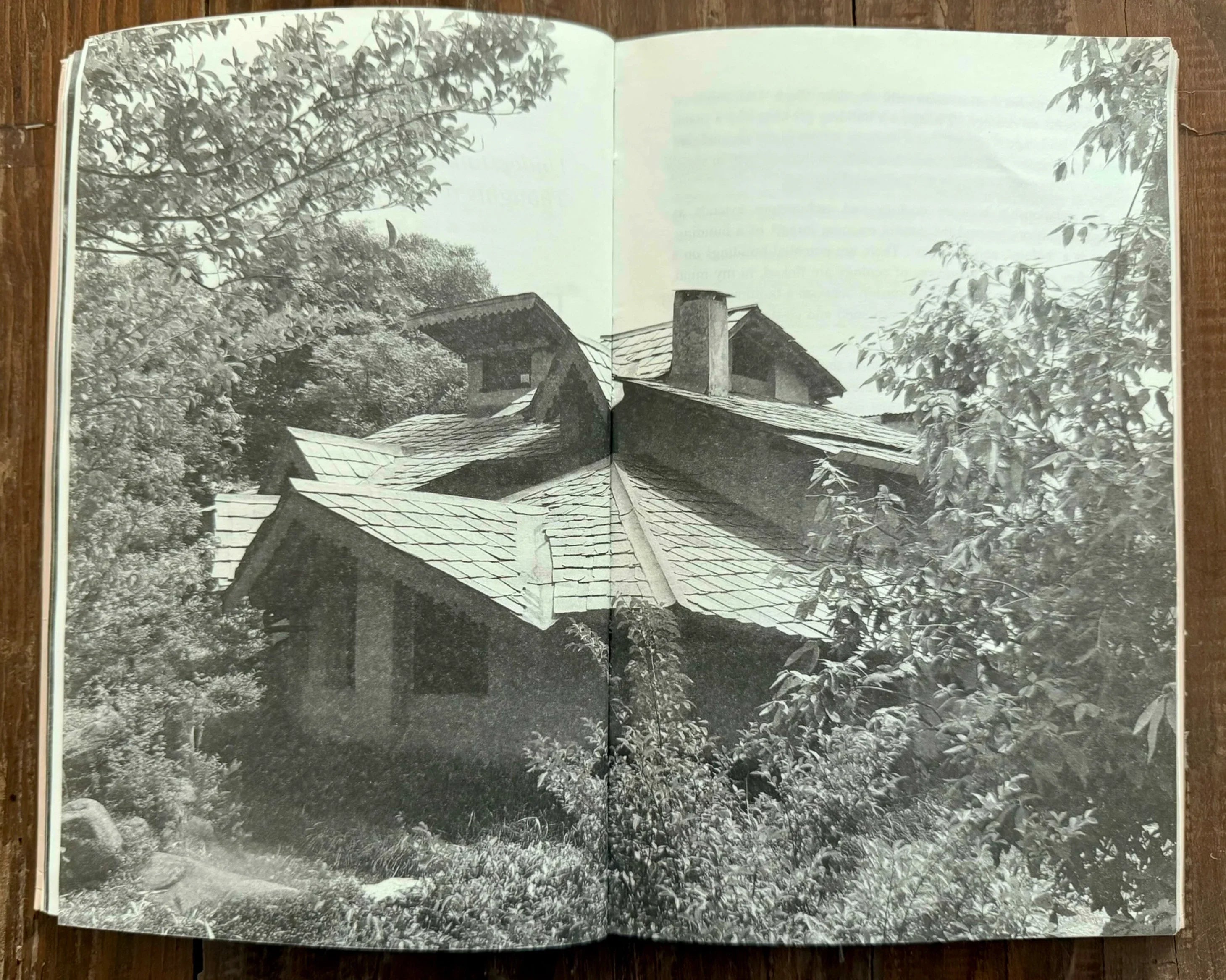Article: A Fresh Design Language: Heritage Craft For Modern Garments
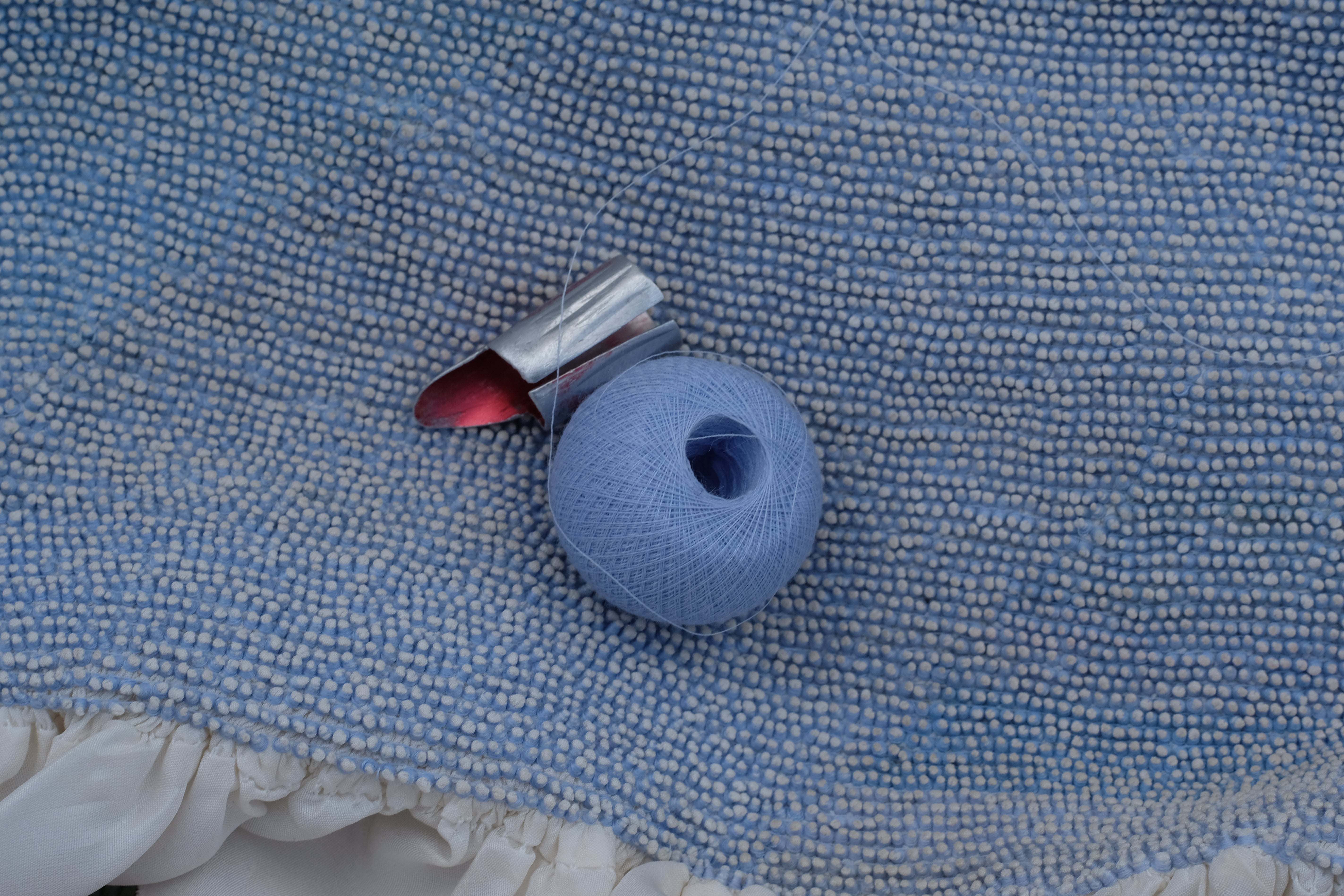
A Fresh Design Language: Heritage Craft For Modern Garments
With the hands of artisans working in meditative rhythm, Bandhani (“bandh” meaning “tie” in Sanskrit) is a traditional dyeing technique that involves immense skill, patience, and precision. This heritage craft is one of India’s oldest and most intricate forms of tie-dyeing, and is considered one of the earliest forms of resist-dyeing in the world.
Craft communities in India have been preserving this textile heritage for centuries in areas of Gujarat and Rajasthan. They often work in collective family units, passing the craft down generations. Kachchh, on the West Coast of India, is home to many such artisan communities – weavers, dyers, embroiderers, block printers, and Bandhani artisans. They often say that “the patterns live in our hands, not on paper” as the craft becomes a part of their muscle memory and way of life.
Giving these artisans a platform and a channel to elevate their livelihood, 11.11/eleven eleven's core idea is to celebrate the richness of this Indian textile craft and reimagine its beauty for a modern lifestyle. Without compromising on its purity and commitment to high-quality, handcrafted craftsmanship, we continue our research and development to evolve this craft. Practicing Bandhani on indigenous cotton and silk garments that age gracefully, are gentle on the skin and the planet, while elevating everyday living with tailored fits and drapes, we have discovered new possibilities for this mesmerising ancient art form to become a part of modern life.

Artisans tying up intricate Bandhani dots
Regenerative craft practices at 11.11/Eleven Eleven - The Introduction of Bandhani
Around 2011, we introduced Bandhani into our design practice and started exploring its beauty. The objective was to reengineer garments to retain the unique crushed texture and vintage aesthetic of the Bandhani craft. Being limited to scarves and sarees, we wanted to explore more modern interpretations of them. Our interaction with Bandhani began by constructing the garment as a three-dimensional product. The idea was not simply to use a Bandhani fabric for garment-making but to re-engineer the marriage of the garment and the craft. Our Bandhani is performed on a garment instead of a panel, where a handmade piece in pure indigenous cotton or silk is given to artisans, who then create the beautiful texture, patterns and motifs on it.

Different stages of Bandhani process: Tying up Bandhani Dots, Dying the garment, Opening up of Bandhani dots
Traditionally, Bandhani revealed its motifs only in white, but in 2017, we began exploring how colour itself could enter the resisting dot. This led us to introduce hand-painting with plant-based dyes over hand-tied Bandhani. A technically demanding but transformative process that added vibrant accents while preserving the craft’s crushed texture and visual depth. The result was a contemporary “jugalbandi,” where two artistic languages met on the same cloth, achieved through collaboration between Kalamkari artisans in Tirupati and Bandhani artisans in Kachchh. These garments embody a modern expression of heritage, where ancient resist techniques and natural pigments come together to evolve an heirloom craft without losing its authentic soul.
Our limited-edition heirloom pieces form a living canvas where we continuously explore and experiment with new ways of reimagining age-old craft for contemporary wardrobes. At 11.11, each multicoloured Bandhani garment is hand-painted with natural plant-based dyes and handcrafted to preserve its characteristic crushed texture an aesthetic coded into its cultural memory. By retaining the natural irregularity, depth, and rhythm of the tied resist, we honour the craft’s authentic charm while shaping a modern language of artisanal clothing.

Our Hand-painted Sweatshirt with Bandhani
Blending multiple heritage crafts into one garment, we aim to celebrate harmony and the vibrant diversity of traditional indigenous crafts.
Behind-the-scenes: From artisans to conscious consumers of sustainable fashion
Kala Khoj Producer Company, a for-profit organization, co-owned by artisans themselves, was born as an 11.11/eleven eleven initiative, and plays the most significant role in the execution and production process. The artisan communities that are part of it are at the foundation of our value chain and are the custodians of this rich art form, practicing this traditional craft with the smallest carbon footprint on the planet.
“To us, design is the backbone of this new-age relationship with craft. In India, Bandhani was mostly limited to scarves and saris, but our motive was to introduce it to other global garments, bringing a new dimension to modern clothing. It has also opened up a new avenue and possibility for artisans to earn through their generational craft,” quotes our co-founder. “It's important for us to mutually respect our own practices and find a way to bring art to the forefront. Together, we build a new language for the craft,” says our designer. The vision is to reintroduce these handcrafted stories and connect the maker to the customer, adding a deeper story to what we wear!

An Artisan at Kala Khoj with her Bandhani Work in process.
Bandhani as part of heirloom garments
With only a few exclusive pieces launched every year, these heirloom pieces take time, effort, and the ancient wisdom of ethical making practices; hence, each garment comes with its own journey. The making details and artisan signature on each piece make the wearer aware of the story they are slipping into. These garments highlight that Bandhani is not just about surface ornamentation, but it also adds a unique texture and depth to the fabric. Evolving fashion through quiet preservation, this mindful union is set to define a new, more collaborative, ethical, and holistic age for design, craft, and the modern way of life!
Also Read:-
The Cultivation of Indigo in Hapur: A Journey into Natural Dyeing

